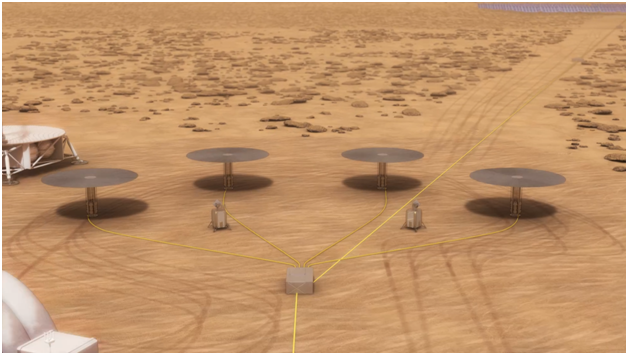NASA Is Working On Small Fission Reactors For Mars Habitats
I have blogged before about NASA’s use of nuclear isotopes for thermal batteries in space probes. Nuclear batteries provide the long term reliable and maintenance free power needed for long space missions. Now NASA is considering the use of nuclear fission reactors fueled with uranium for installations on Mars.
In the 1960s, NASA worked on fission reactors for use in space missions. The Systems for Nuclear Auxiliary Power (SNAP) research project resulted in two types of nuclear reactors. The first system was the radioisotope thermoelectric generators (RTG) which utilize heat from the decay of radioactive elements such as plutonium to generate electricity. The RTGs have provided power for dozens of space probes.
The second technology developed by the SNAP program was a fission reactor called the SNAP-10A. It was the only U.S. nuclear power reactor that has even operated in space. After launch in early April of 1965, it ran successfully for forty three days before the failure of unrelated equipment in the spacecraft brought an end to the demonstration.
NASA has provided funds for other nuclear power technology development projects after SNAP but those projects were ultimately abandoned for a variety of reasons including problems with funding, political issues and technical problems.
In 2010, NASAs interest in fission reactors was reawakened because of a study reviewing options for power systems to be used in space missions. In 2014, NASA’s Game Changing Development program provided funds for a program called Kilopower. The goal of this fifteen million dollar project was to build and test a small nuclear fission reactor by September 30, 2017 at the Nevada National Security Site near Las Vegas. The testing is scheduled to be completed by January of 2018. If the tests are successful, then NASA will begin work on a bigger system for testing on Mars or other long space mission.
The Kilopower reactor is about six and a half feet tall. It is designed to produce as much as a kilowatt of electricity. However, the test reactor will not include the Stirling engines that are part of the full design. The Stirling engines convert the energy of the fission reactors into heat. The tests will use thermal simulators to verify that the reactor is generating the desired output.
NASA engineers estimate that human expeditions to Mars will require systems that can generate about forty kilowatts of power. The greatest power requirements for future human Mars expeditions will be the equipment that is needed to produce fuel, air, water, run the habitat and power scientific equipment. NASA plans call for sending four or five small ten kilowatt fission reactors to Mars.
NASA considered the use of solar panels to generate electricity on Mars but that would restrict missions to areas of Mars that received enough sunlight to provide the needed energy. The places on Mars that receive the most sunlight only get about a third of the solar energy that sunny places receive on Mars. There is also the problem of the regular dust storms on Mars that would block sunlight even in sunny areas.
Artist’s concept of four nuclear fission reactors on Mars:
